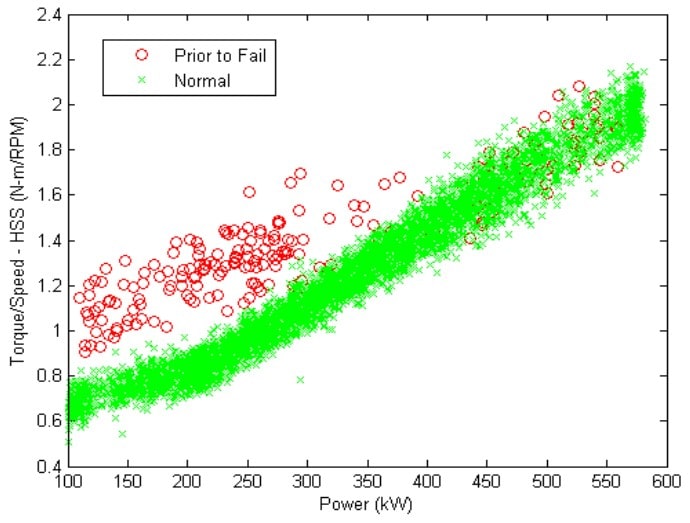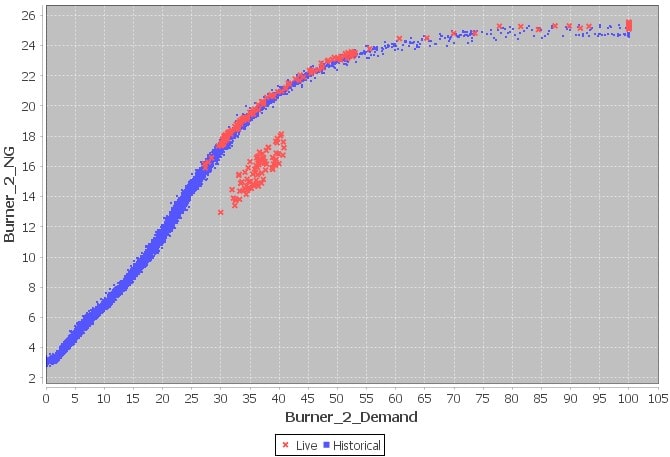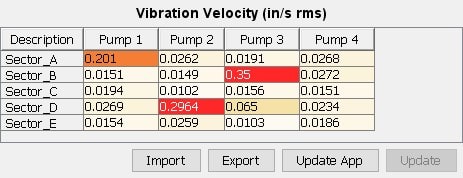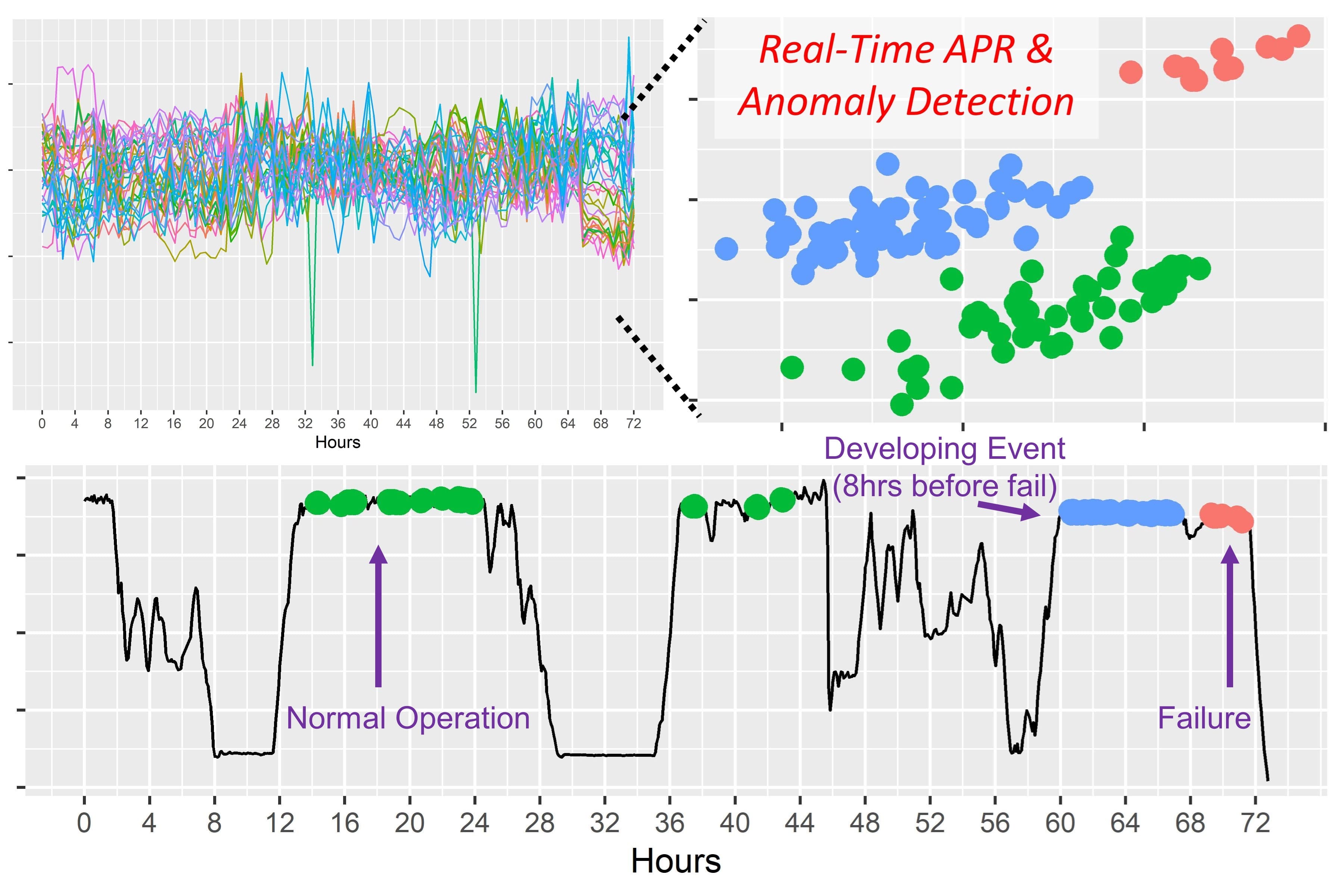Taber application deployments within the Griffin AI Toolkit® provide an excellent platform for improving maintenance practices. Condition-based maintenance can replace time-interval or "gut-feel" based approaches.
Detecting problems before they cause process upsets or secondary damage.This reduces the overall maintenance burden as well as costs from unexpected downtime. Some of the user-friendly tools Taber delivers that can quickly enhance your condition-based and predictive maintenance protocols are:
- Actual vs. Historical Trending
- Post DCS Alarm Filtering
- Data-Driven Modeling
Actual vs. Historical Trending


Detecting departures from expected values is an essential element of condition-based maintenance. Users first create a reference dataset of "normal" operating conditions. Current vibration, power consumption, or other data can then be trended on top of the expected values, as shown below. The image on top is data from a wind turbine prior to a failure event. The image on bottom shows a departure from expected fuel flow for a gas burner, indicating a maintenance need. With Griffin, this type of display can be created in seconds, based on existing data and without the addition of new sensors.
If users wish to avoid or supplement onboard vibration sensor alarms, maintenance on multiple types of equipment can be scheduled intelligently by routing vibration data into Griffin, where a maintenance priority can be assigned based on existing ISO® standards. Live Griffin displays, such as shown on the right, can be easily created and customized, providing color-coded priority levels to plant personnel.

Post-DCS Alarm Filtering
With the proliferation of equipment monitoring hardware that includes onboard diagnostics and alarm generation (MSET and similar), false positives have become a serious issue. Griffin’s graphical programming environment allows users to quickly develop and deploy alarm filtering logic that can be easily updated in real-time based on experience and best practices. This adds crucial flexibility to DCS systems and black-box solutions provided by other vendors.
Data-Driven Modeling & Anomaly Detection
More sophisticated fault detection relies on creating a model to predict the value of a given output across operating conditions. These models can be statistical, such as with MSET, based clustering algorithms, or regression algorithms like a neural network. Data-driven modeling deployments in the Griffin AI Toolkit® have the advantage of being testable and tunable by the user, and fully integrated into our graphical programming environment. Griffin also provides the Genetic Trainer, a powerful package for automatically searching for the optimal neural network to fit a given dataset.
Once the data-driven model is trained to predict the process value (using user-curated “good” data), it can be used to predict the current value. When a significant deviation is observed, users can be alerted to either a malfunctioning sensor, maintenance issue, or some other type of process problem. This method can be applied to any type of output generated by a plant, including entire groups of outputs simultaneously.

Predictive maintenance and anomaly detection can drastically improve process reliability and operating costs. Utilizing intelligent systems for this purpose takes the strain away from maintenance personnel doing manual monitoring and can be more effective and accurate.
optimize the complex, automate the mundane
talk to an expert
More sophisticated fault detection relies on creating a model to predict the value of a given output across operating conditions. These models can be statistical, such as with MSET, based clustering algorithms, or regression algorithms like a neural network. Data-driven modeling deployments in the Griffin AI Toolkit® have the advantage of being testable and tunable by the user, and fully integrated into our graphical programming environment. Griffin also provides the Genetic Trainer, a powerful package for automatically searching for the optimal neural network to fit a given dataset.
Once the data-driven model is trained to predict the process value (using user-curated “good” data), it can be used to predict the current value. When a significant deviation is observed, users can be alerted to either a malfunctioning sensor, maintenance issue, or some other type of process problem. This method can be applied to any type of output generated by a plant, including entire groups of outputs simultaneously.

Predictive maintenance and anomaly detection can drastically improve process reliability and operating costs. Utilizing intelligent systems for this purpose takes the strain away from maintenance personnel doing manual monitoring and can be more effective and accurate.
optimize the complex, automate the mundane
talk to an expert